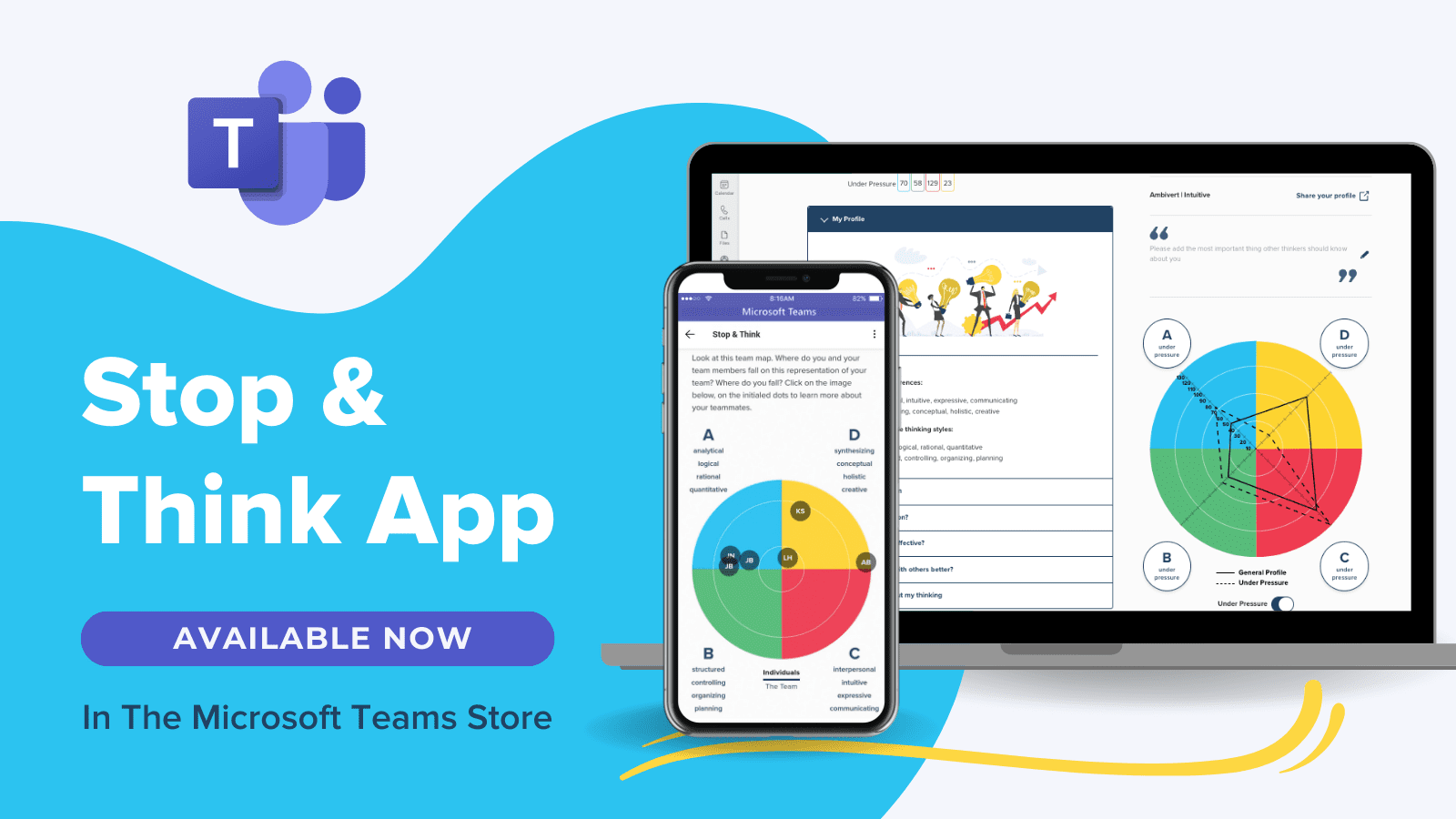I’ve worked as a freelance product manager for most of my career, allowing me to work on various products in a wide range of companies. Each opportunity allowed me to help a new team form and grow.
Through my work with all of those teams, I’ve developed a first-hand, in-depth understanding of what it takes to make a team work and the specific steps to take as you form teams to maximize your effectiveness.
If you were to ask me what I know now that I wish I had known when I started working with teams, I’d be quick to say, “Apply Whole Brain® Thinking.”
Thankfully, Stop & Think - Herrmann’s new Whole Brain® Thinking app in Microsoft Teams - provides powerful insights and application tools that have helped me create new teams and add new members to existing teams in a way that ensures that teamwork actually makes the dream work.
Here’s a look at what makes an effective team and how I’ve used Stop & Think to instill those characteristics in teams I’ve started and grown.
Characteristics of an effective team
Over the years, I’ve worked on projects with several different groups of people, but I can say that I’ve only had the chance to work with a few true teams.
Certain conditions have to be in place for me to consider a collection of people a true team; it usually centers on clear communication, shared expectations, and a positive team dynamic.
Clear Communication
I know I’m working with a true team when they share information freely and effortlessly. No team member hoards information, and any team member is comfortable talking with another team member.
The team also has a variety of ways to share information and consistently uses the right communication channel, method, or approach for each situation.
A true team needs a culture of trust and respect among its team members so that they feel as though they can easily ask their teammates for help and can provide honest feedback.
Shared Expectations
A true team also needs to have a consistent definition of success and should align in how they’re measuring it and tracking toward their success metrics.
Along with shared and measurable goals for the entire team, everyone on the team should understand how they contribute to the overall goals. You want everyone to know their own roles and responsibilities and how they mesh with their teammates’ roles and responsibilities.
Sign up to our newsletter for the latest insights
Positive Team Dynamics
Working with other people is often quite rewarding but can sometimes present challenges. The members of a true team view those challenges as opportunities to strengthen their relationships with their team members.
All of your team members should feel that they are welcome and valued members of the team. They should also have a good sense of how best to work with all other team members.
A team exhibits positive dynamics when its members can work through the shared challenges they face effectively. They have a sense of “we’re all in this together.” They view team members' different backgrounds, experiences, and characteristics as a strength they can leverage rather than obstacles they have to overcome.
Forming a New Team
I’ve had plenty of opportunities to form new teams to work on a significant project. From the early opportunities, I learned that expecting a team to build a strong dynamic magically is wishful thinking.
Once I got intentional about starting up a new team, I searched for tools and techniques to get the team started on the right foot.
One of the best tools I’ve found is a kickoff session where the team gets together and learns more about each other discusses how they can best work together, and defines the problem they’re trying to solve.
A kickoff meeting comprises a set of activities that help your team:
- Agree to a common purpose that includes your inspiration for the work, a description of that work, and how you’ll measure success.
- Build alignment around simple rules your team will follow when working together and the ground rules, norms, or shared agreements your team will use.
- Become aware of your context - how your team’s work fits into the larger organization.
Larsen, Diana; Nies, Ainsley. Liftoff: Start and Sustain Successful Agile Teams Pragmatic Bookshelf.
Before I learned about Whole Brain® Thinking, those activities involved whiteboards, sticky notes, and precisely worded questions. Now that my teams can access Stop & Think, we can better understand each other, our purpose, and our context.
For example, this view of the team’s profile provides background information that we can use to identify simple rules and working agreements to strengthen our approach to work and to remind us to pay attention to the things we may overlook.
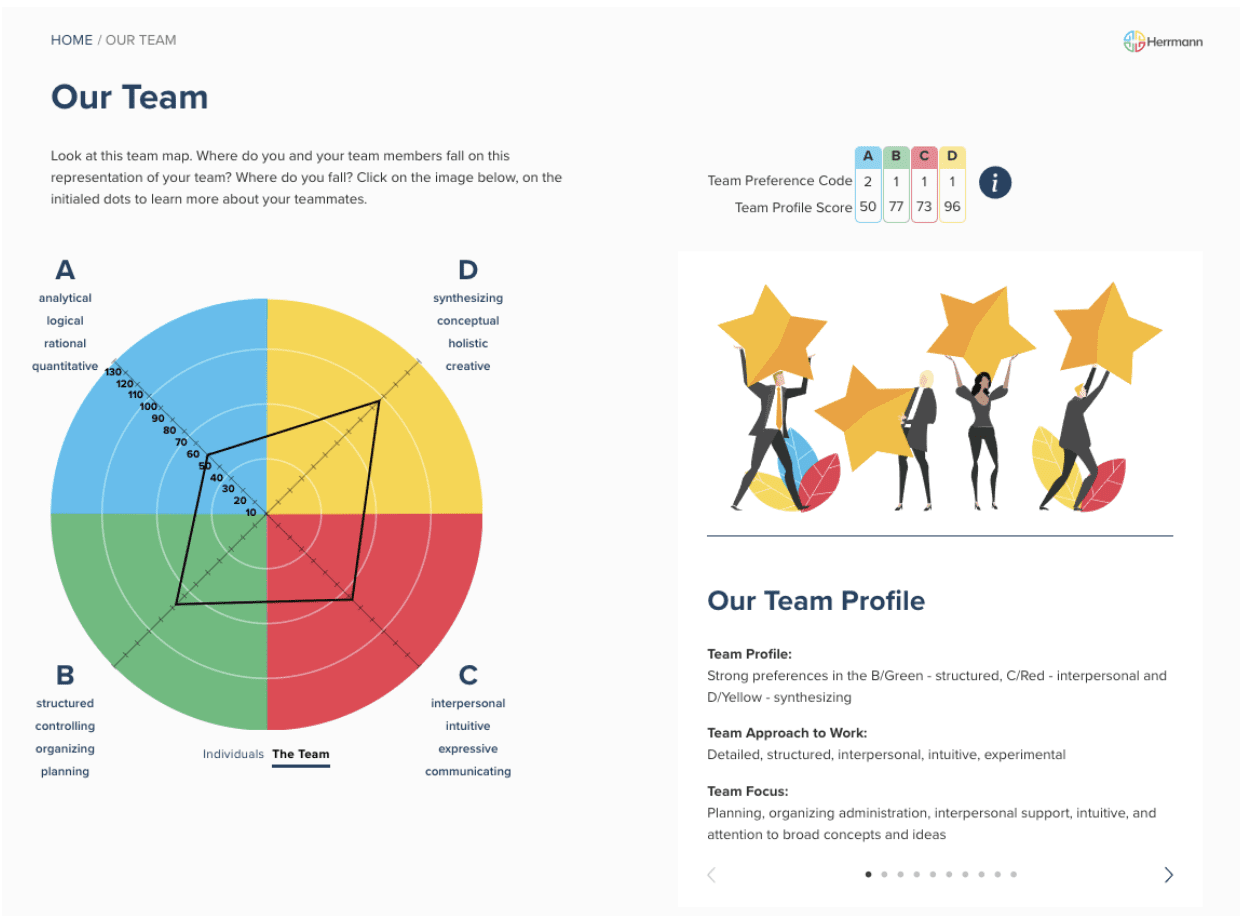
Working agreements are helpful at any time for a team, but they are especially helpful when things get a little stressful. That’s where our team’s under-pressure profile came in handy.
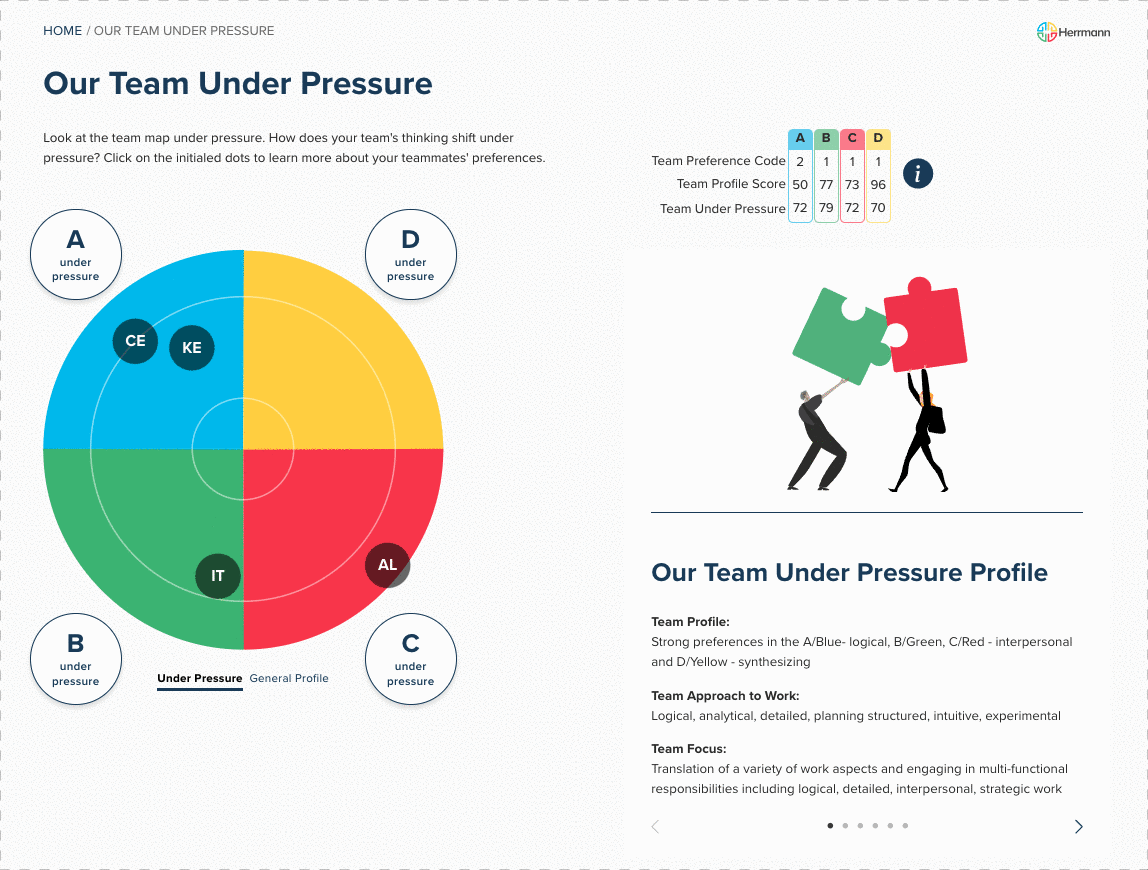
We compared our team’s general and under-pressure profiles to see how our thinking preferences shift under pressure and identified specific working agreements for particularly stressful situations.
For example, we noticed that our team may overlook communication when we’re under pressure, so we adopted an operating agreement called “ABC: Always Be Communicating.”
When it came time to identify a common purpose, we used the Whole Brain® Goal Setting Walk Around tool to guide our discussions about team goals.
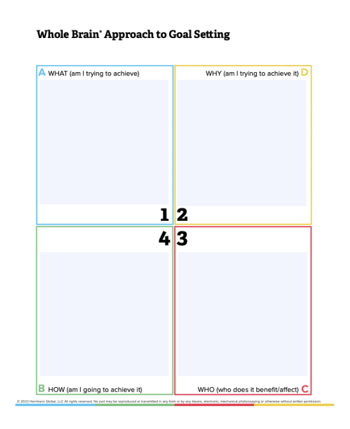
Onboarding New Team Members
The time you invest in getting a team up and running will produce more significant returns when that team stays together for a considerable amount of time. There’s value in keeping a team together because they’ll take the purpose and working agreements they established when they started and build on them to become a highly functioning team.
There’s also value in occasionally bringing new members to the team. Sometimes you need to do that to supplement your existing skill set or add capacity to meet new demand. Sometimes a current team member wants to try out new opportunities, so you need to replace them.
Whatever your reason for adding a new team member, you want to ensure that you can include them as part of the team as quickly as possible.
Walking them through the team purpose and working agreements created when you first formed the team is helpful. You also want to help them become familiar with everyone else on the team.
The quickest way is to clue them in on the best way to interact with their teammates. You can also help everyone on the team determine the best way to interact with your new teammate.
When a new person joins your team, ask them to complete and share their HBDI® profile. Once they’ve done that, walk them through the team profile in Stop & Think. Use the profiles to provide a bit more background on why you have the working agreements you do.
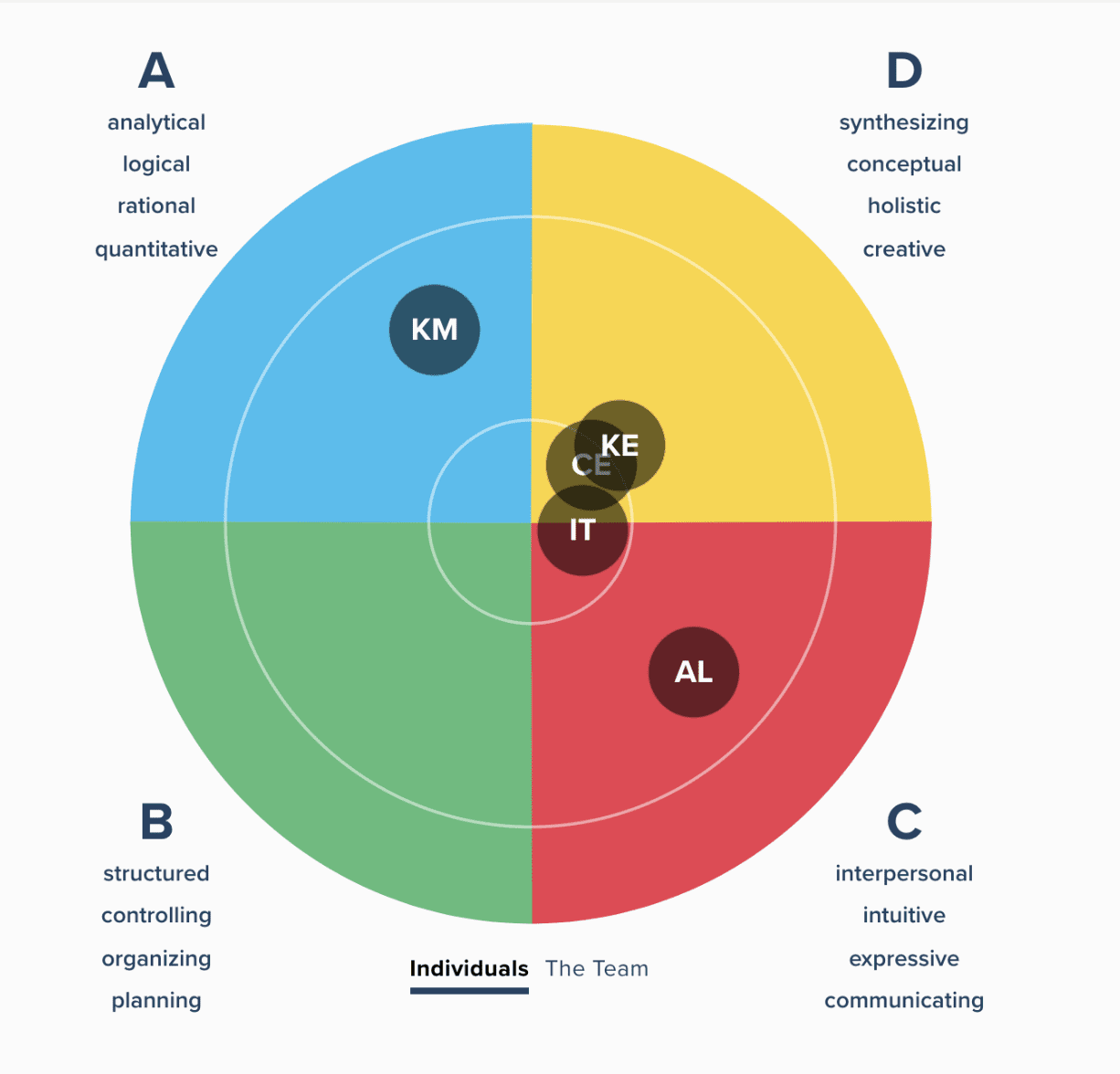
Let them know that as they get to know their teammates, they can learn more about each one in the Getting to Know Your Team Members section of Stop & Think, which includes the option to view an expanded profile for each teammate.
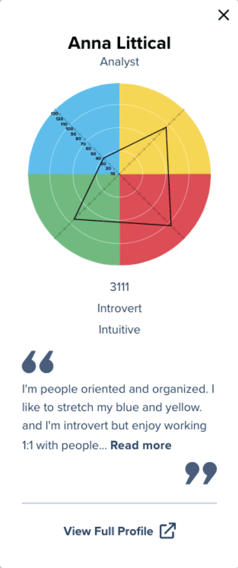
You’ll also want to discuss each other's profile sections about building trust and frustrations as a team.
The Stop & Think app links those sections of each team member’s personalized HBDI® profile, so your teammates can quickly review and discuss each other’s responses. This is a helpful activity when bringing someone new on board and for already formed teams.
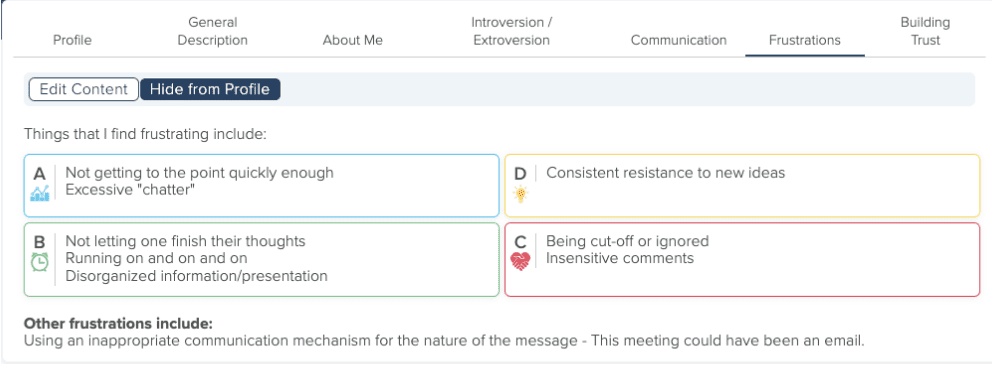
On the last couple of teams I’ve worked with, we’ve found that having explicit discussions about building trust and frustrations has helped set expectations about what behaviors to reinforce and avoid.
When first joining a team, having this knowledge can help new team members avoid awkward situations and form immediate bonds with their teammates.
Conclusion
Forming a new team and bringing a new member onto an existing team are critical points for a team’s overall effectiveness. The time you invest in getting a team started to a good start or easing the transition of bringing a new team member on will pay dividends.
Stop & Think helps to guide team startups and onboarding by providing the critical information you need to understand how your team members think through targeted questions that help guide your conversations.
When you use Stop & Think, you’re not only investing time to build strong relationships from the start but making the best use of the time you invest.


.png?width=1200&height=627&name=Copy%20of%20Product-oriented%20%20Blog%20post%20Template%20(1).png)



